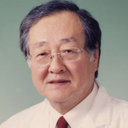Human neural stem cells genetically modified for brain repair in neurological disorders.
Nyckelord
Abstrakt
Existence of multipotent neural stem cells (NSC) has been known in developing or adult mammalian CNS, including humans. NSC have the capacity to grow indefinitely and have multipotent potential to differentiate into three major cell types of CNS, neurons, astrocytes and oligodendrocytes. Stable clonal lines of human NSC have recently been generated from the human fetal telencephalon using a retroviral vector encoding v-myc. One of the NSC lines, HB1.F3, carries normal human karyotype of 46XX and has the ability to self-renew, differentiate into cells of neuronal and glial lineages, and integrate into the damaged CNS loci upon transplantation into the brain of animal models of Parkinson disease, HD, stroke and mucopolysaccharidosis. F3 human NSC were genetically engineered to produce L-dihydroxyphenylalanine (L-DOPA) by double transfection with cDNA for tyrosine hydroxylase and guanosine triphosphate cylohydrolase-1, and transplantation of these cells in the brain of Parkinson disease model rats led to L-DOPA production and functional recovery. Proactively transplanted F3 human NSC in rat striatum, supported the survival of host striatal neurons against neuronal injury caused by 3-nitropro-pionic acid in rat model of HD. Intravenously introduced through the tail vein, F3 human NSC were found to migrate into ischemic lesion sites, differentiate into neurons and glial cells, and improve functional deficits in rat stroke models. These results indicate that human NSC should be an ideal vehicle for cell replacement and gene transfer therapy for patients with neurological diseases. In addition to immortalized human NSC, immortalized human bone marrow mesenchymal stem cell lines have been generated from human embryonic bone marrow issues with retroviral vectors encording v-myc or teromerase gene. These immortalized cell lines of human bone marrow mesenchymal stem cells differentiated into neurons/glial cells, bone, cartilage and adipose tissue when they were grown in selective inducing media. There is further need for investigation into the neurogenic potential of the human bone marrow stem cell lines and their utility in animal models of neurological diseases.


